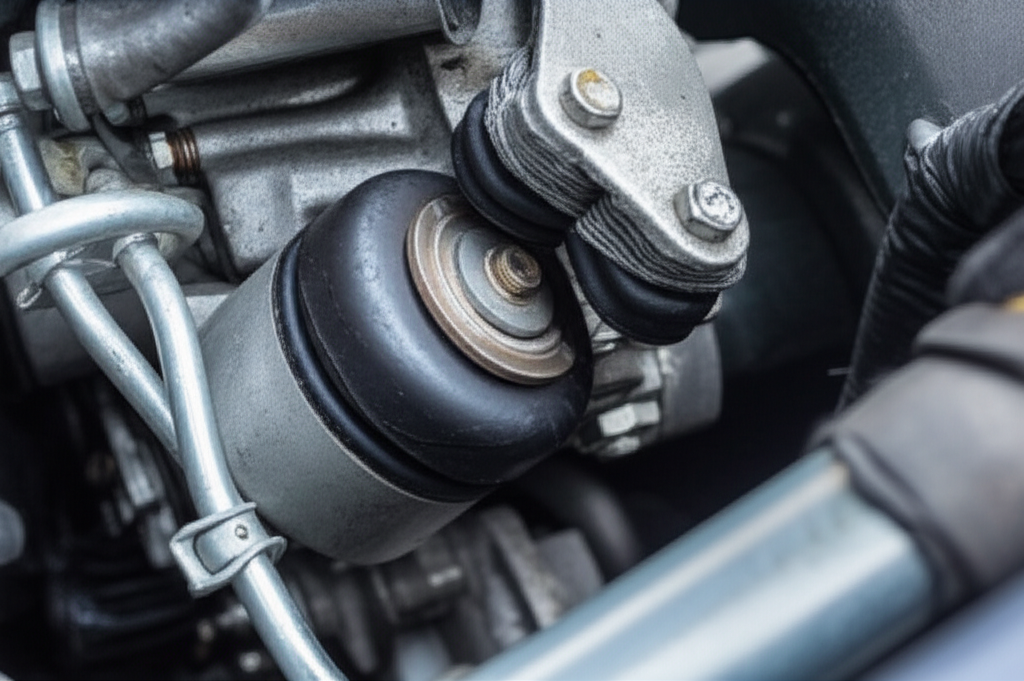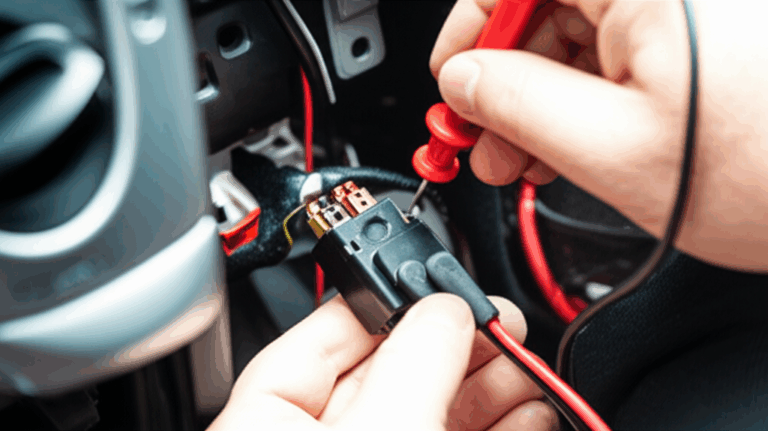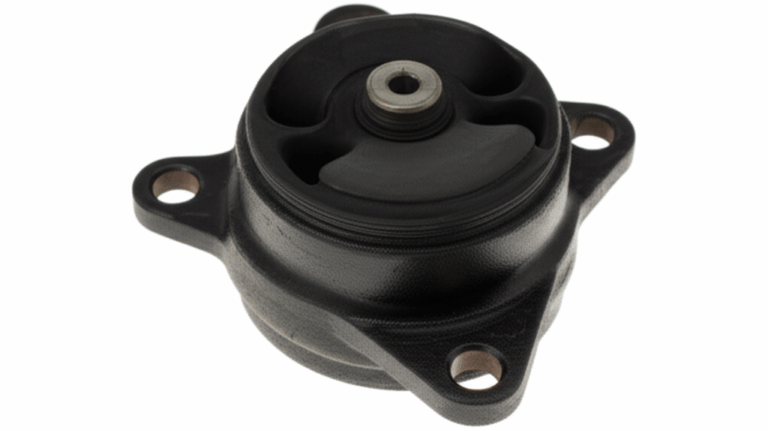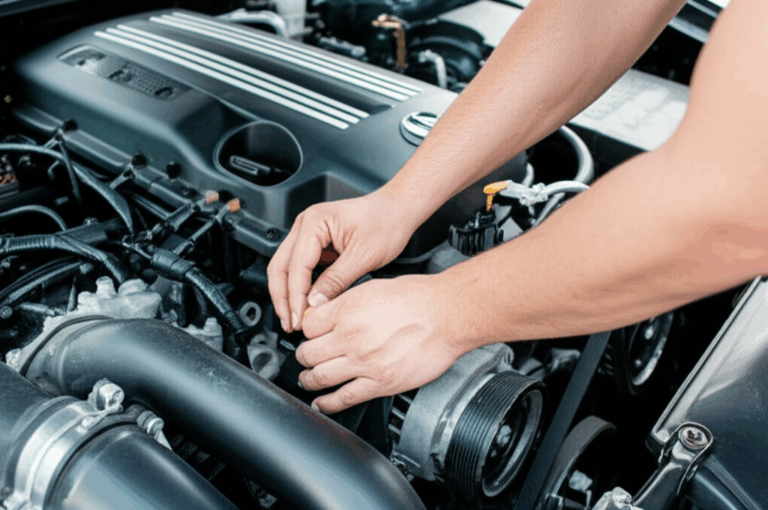
How to Tell If Motor Mounts Are Bad: 7 Key Signs & DIY Inspection Guide
Table of Contents
- How to Tell If Motor Mounts Are Bad: 7 Key Signs & DIY Inspection Guide
- What are motor mounts and why do they matter?
- What are the top symptoms of bad mounts?
- How do I check motor mounts at home?
- What causes motor mount failure?
- Can I drive with bad motor mounts?
- How much does it cost to replace motor mounts?
- How do I tell which mount is bad?
- What is the difference between engine mounts and suspension?
- DIY vs professional diagnosis and repair
- How to prevent motor mount issues
- Do better parts reduce vibration and stress?
- Motor mount replacement guide and steps
- Quick reference tables
- Frequently asked questions
- Key takeaways
Your car shakes. You hear a clunk. The engine looks like it moves. You wonder if the motor mounts are bad. In this guide I show you the signs, the tests, and the next steps. Read this now because bad mounts can hurt the engine, the transmission, and your wallet.
Problem: You feel vibration and noise.
Agitate: It gets worse. Parts wear out. You lose comfort and control.
Solution: Learn the symptoms of bad motor mounts, check them fast, then fix the cause with clear steps.
What are motor mounts and why do they matter?
Motor mounts, also called engine mounts or transmission mounts, hold the engine and transmission to the chassis or subframe. Each mount has metal bracket parts and a rubber bushing or a hydraulic mount with a fluid-filled mount core. The rubber absorbs vibration and noise. It controls torque so the powertrain does not jump.
When mounts fail the engine can rock and twist. You may feel NVH (Noise, Vibration, Harshness) in the steering wheel, the dashboard, the gear shifter, and the seats. Bad mounts stress the drivetrain, the exhaust system, the driveshaft, the axle, and the frame. Safe braking, smooth shifting, and steady acceleration all suffer.
What are the top symptoms of bad mounts?
I look and listen for clear motor mount failure signs. Here are the big ones I see in the shop.
- Excessive engine vibrating when idle. You feel it in the seat or floor. It is worse at specific RPMs. That is classic vibration from motor mounts.
- Clunking noise when accelerating or thumping noise from engine. You may also hear noise when going over bumps or during start and stop.
- Engine moving excessively. The motor tilts or the engine rocking back and forth when you rev with the brake on.
- Jerking motion on acceleration or decel. The vehicle shudders. The engine lurches when shifting. You get rough idling motor mounts too.
- Fluid leaking from motor mount. On a hydraulic motor mount, dark oil seeps out. That is a fluid-filled motor mount leak.
- Cracked motor mount rubber, torn rubber, or the motor mount broken rubber. The rubber can separate from the metal bracket.
- Harsh or delayed shifting. You feel a bang. These are transmission mount symptoms that point at the rear transmission mount.
You may also notice:
- Car shaking when stopped at a light.
- Vehicle shakes on startup.
- Rumbling noise from engine bay.
- The engine feels loose.
- Engine sag motor mount that lowers the engine on one side.
These are the core bad engine mount symptoms and signs of worn motor mounts. They are also the top signs of imminent motor mount failure.
How do I check motor mounts at home?
You can do a safe DIY motor mount inspection with simple diagnostic tools.
- Safety first. Park on level ground. Use wheel chocks. If you raise the car use a jack and stands. Never trust a jack alone. Wear eye protection.
- Tools needed. A flashlight. A mirror. A clean rag. A small pry bar if needed. A friend to watch the engine as you test.
Step-by-step:
If in doubt get a professional motor mount diagnosis from a mechanic or technician at a trusted repair shop.
What causes motor mount failure?
I get this a lot. What causes motor mounts to go bad and why are my mounts failing?
- Age and mileage cause motor mount wear and tear and motor mount degradation. Rubber hardens with heat and time.
- Aggressive driving with hard acceleration and braking adds stress and engine torque excessive movement.
- Oil leaks affecting motor mounts from the engine or power steering can eat rubber.
- Road conditions like potholes can crack mounts.
- Accidents bend the frame or subframe and break mounts.
- Incorrect installation motor mounts can cause problems fast.
- Some cars have vehicle specific motor mount problems due to design.
- Manufacturing defects happen but they are rare.
- High NVH and powertrain movement issues can shorten life too.
These are the true causes of motor mount failure.
Can I drive with bad motor mounts?
People ask, can you drive with bad motor mounts or is it safe to drive with bad motor mounts. You might drive for a short time if the mount is only worn. I do not advise it. Here is why.
- Dangers of bad motor mounts grow fast. The consequences of failing motor mounts include broken exhaust system parts and torn driveshaft joints.
- You can get exhaust system banging bad mounts. You can also see catalytic converter damage bad mounts.
- The impact of bad mounts on transmission is real. Harsh shifting gets worse. You may feel difficulty shifting gears bad motor mounts cause.
- You can see drive shaft issues bad mounts and axle damage motor mounts.
- You can cause uneven tire wear bad mounts and premature component failure bad mounts due to poor alignment.
- The car may feel loose. Car feels less responsive. You might even feel loss of power motor mounts due to wasted motion.
If the mount fails fully the engine can drop or shift. That can be very unsafe. In short you should schedule an urgent motor mount replacement when you see clear signs.
How much does it cost to replace motor mounts?
The cost to replace motor mounts depends on the car and the mount. You pay for parts and labor. OEM motor mounts vs aftermarket will change the price. Aftermarket parts can cost less. They can also change NVH. Some owners read aftermarket motor mount reviews before they buy.
Some mounts are easy to reach. Some are buried under the cradle or near the subframe. Labor time goes up in those cars. Ask your shop for a clear estimate and a written motor mount replacement guide for your model.
How do I tell which mount is bad?
You can learn how to tell which motor mount is bad with a few clues.
- If the nose of the engine jumps on throttle the front motor mount symptoms show first.
- If the engine slams in reverse the rear motor mount symptoms show up.
- If the engine sags on the right the passenger side motor mount symptoms will match. On the left you see driver side motor mount symptoms.
- If you feel high vibration near the top you may have upper motor mount symptoms. Low harshness can mean lower motor mount symptoms.
- If shifts hit hard you may have transmission mount symptoms.
Add a visual check. Look at each mount. A clean engine support system failure leaves marks. You may spot rubber tears near one bracket. That helps you pin down the bad one.
What is the difference between engine mounts and suspension?
People ask the difference between engine mounts and suspension. They do different jobs.
- Engine mounts or motor mounts hold the engine and transmission to the chassis. They control torque and NVH.
- Suspension holds the wheels to the frame. It controls bounce and keeps tire wear even. It also helps steering and braking.
Bad motor mounts can feel like a suspension issue. That is why diagnosing engine vibration and automotive vibration troubleshooting matters.
DIY vs professional diagnosis and repair
You can test motor mounts yourself. You can also ask a mechanic for a professional motor mount diagnosis. I use both plans at home and in the shop.
- Try a DIY motor mount inspection first. Follow the steps above. Use your engine mount inspection checklist. Note hydraulic motor mount symptoms and any fluid leaking from motor mount.
- If you see damage book a visit. A technician can use better diagnostic tools. They check powertrain movement under load. They also spot components affected by bad mounts like the exhaust system, driveshaft, and axle.
If you do not have the gear or space go to a repair shop. Ask for photos and a clear plan.
How to prevent motor mount issues
You can prevent some mount problems.
- Fix oil leaks affecting motor mounts fast. Dirty oil eats rubber.
- Drive smooth. Avoid harsh launches and panic stops that cause engine torque excessive movement.
- Keep up with car maintenance. Inspections catch age-related motor mount issues and motor mount degradation early.
- Know the average motor mount replacement interval. Many last 5 to 7 years or 50,000 to 100,000 miles. Heat and road conditions change that.
- Choose the right parts. Learn solid motor mount vs hydraulic. Some use polyurethane. Read polyurethane motor mount pros cons. Stiff parts can add NVH. Soft parts feel smoother yet may not hold heavy loads as well.
These steps help with motor mount lifespan extension.
Do better parts reduce vibration and stress?
Good design cuts NVH at the source. If you build or repair motors you already know this. Precision cores and laminations reduce ripple and shake. That reduces mount stress in hybrid and EV powertrains.
- See how quality motor core laminations improve magnetic balance and lower noise in traction motors.
- Learn why a tight and balanced stator core lamination helps cut torque ripple that feeds vibration.
- A well made rotor core lamination stays true at speed which reduces harshness that reaches the mounts.
- High grade electrical steel laminations can boost efficiency and lower heat which also helps NVH.
Lower NVH means less stress on drivetrain components and better life for motor mounts, the drivetrain, and the exhaust system.
Motor mount replacement guide and steps
Here is a simple motor mount replacement guide you can review before you book the job. If you are not trained do not try this at home.
- Plan the job. Get the right OEM part or the right aftermarket parts for your car. Decide on OEM motor mounts vs aftermarket after you read the pros and cons for comfort and life.
- Support the engine. Use a support bar or a jack with a wood block under the oil pan. Do not crush the pan.
- Remove the old mount. Unbolt from the frame or subframe and the engine or transmission. Watch for wiring and hoses.
- Fit the new one. Set bolts by hand to avoid cross thread. Torque to spec. Follow the motor mount replacement steps in your service guide.
- Recheck and road test. Listen for noise. Watch for vibration at specific RPMs. Confirm no leaks.
If you see incorrect installation motor mounts later fix it right away.
Quick reference tables
Here is a quick guide you can print.
Symptom | What it often means | How to check
Excessive vibration at idle or at specific RPM | Worn or torn rubber in a mount | Look for cracks and do the engine rock test
Clunk on accel and brake | Mount allows engine to hit stop | Watch for engine tilt when you brake and gas
Leaking fluid near mount | Failed hydraulic mount | Wipe clean then look for new seep
Engine sags to one side | Collapsed mount | Measure gap and compare sides
Harsh shifts and bang | Bad transmission mount | Power brake in reverse and drive then observe
Another table you can use for fast checks.
Question | Yes | No
Do you feel a jerking motion on acceleration | |
Do you hear clunking noise when accelerating or a thumping noise from engine | |
Do you see the engine rocking back and forth when you do a light power brake test | |
Do you spot cracked motor mount rubber or motor mount broken rubber | |
Do you see fluid leaking from motor mount on a hydraulic design | |
Frequently asked questions
Q: How long do motor mounts last
A: Many last 5 to 7 years or 50,000 to 100,000 miles. Heat and use change this. Ask about the average motor mount replacement interval for your model.
Q: What does a good motor mount look like
A: The rubber is solid and centered. No tears. No sag. No leaking fluid. That answers what does a good motor mount look like.
Q: How do motor mounts work
A: They tie the engine and transmission to the chassis with a rubber bushing or hydraulic mount core. They control torque and NVH. That is the purpose of engine mounts and how motor mounts work.
Q: Can bad motor mounts cause steering issues
A: Yes they can. The steering system can feel loose if the powertrain shifts. You might feel shake in the steering wheel too.
Q: Are there common motor mount failures on some cars
A: Yes. Some have vehicle specific motor mount problems. Search forums and aftermarket motor mount reviews for your model.
Q: Why are my motor mounts bad
A: Age, heat, leaks, and harsh use. That covers why are my motor mounts bad and what causes motor mounts to go bad.
Q: What parts get hurt by bad mounts
A: Many components affected by bad mounts like the exhaust system, the drivetrain, the driveshaft, the axle, and the transmission can wear early.
Q: Can bad mounts cause engine knocking when turning
A: Yes. If the engine shifts it can tap or hit a stop. You may hear engine knocking when turning.
Q: Can bad mounts hurt braking
A: Yes. Sudden engine shift can change weight and feel. That can hurt braking control.
PAS recap woven through your check
- Problem: Symptoms of failing engine mounts show up as shake and noise. You may also see difficulty shifting gears bad motor mounts cause.
- Agitate: Wait too long and you get stress on drivetrain components, uneven tire wear bad mounts, and premature component failure bad mounts. You risk exhaust system banging bad mounts and catalytic converter damage bad mounts.
- Solution: Do a DIY motor mount inspection, confirm with a professional motor mount diagnosis, then follow clear motor mount replacement steps. Choose the right parts for your comfort and life goals. Keep up with vehicle maintenance motor mounts.
Deep-dive: more signals you can use
You might spot these motor mount failure signs during a road test.
- A heavy bump where the engine drops on shut down. You might also hear a slam on start.
- A shake that gets worse at one speed band. That is vibration at specific RPMs.
- A bang when you shift from park to drive. That points to a loose transmission mount.
- A shudder when you press the gas at low speed. That is a type of jerking motion on acceleration.
I also compare sides for tilt. That helps me spot upper motor mount symptoms or lower motor mount symptoms. On some FWD cars the rear motor mount symptoms show up as a heavy clunk in reverse. On some cars the front motor mount symptoms show when you stop hard and hear a thud.
Pro tips for clarity and comfort
- Keep a simple log. Note date, mileage, and what you felt. Track NVH (Noise, Vibration, Harshness) motor mounts changes over time.
- If your car has a hydraulic mount, smell the leak. It often smells like oil. A fluid-filled motor mount leak can look dark and sticky.
- Think of location. A noise near the firewall points to the rear mount on many FWD cars.
- Remember the whole system. The powertrain, drivetrain, chassis, and suspension all play a part. That is why understanding engine movement helps so much.
Who should replace the mounts and when
You want to know when to replace motor mounts. Replace them when:
- You see clear cracks or a leak.
- You feel harsh shake and you rule out misfire and wheels.
- You find clear movement on the rock test.
If one is bad check them all. I often replace pairs on older cars. That helps reset the system. If you tow or drive hard you may need a shorter average motor mount replacement interval.
For the installer choose OEM for stock feel. Choose polyurethane or solid mounts for track use if you accept more NVH. Read polyurethane motor mount pros cons and compare solid motor mount vs hydraulic options with your goals.
A quick checklist you can use today
Use this list to speed your how to diagnose motor mount issues plan. It blends what you might search and what you should check so you can act fast.
- See and feel: symptoms of bad motor mounts, bad engine mount symptoms, and transmission mount symptoms.
- Hear: clunking noise when accelerating, thumping noise from engine, rumbling noise from engine bay, and noise when going over bumps.
- Watch: engine moving excessively, engine rocking back and forth, and engine lurches when shifting.
- Feel: rough idling motor mounts, jerking motion on acceleration, and car shaking when stopped.
- Inspect: fluid leaking from motor mount, cracked motor mount rubber, motor mount broken rubber, engine sag motor mount, and leaking fluid near the mount.
- Think: difference between engine and transmission mount, how to check motor mounts, test motor mounts yourself, and checking motor mount integrity.
- Plan: motor mount replacement guide, motor mount replacement steps, bad motor mount repair, and urgent motor mount replacement.
- Learn: causes of motor mount failure, what causes motor mounts to go bad, common motor mount failures, and signs of imminent motor mount failure.
- Decide: OEM motor mounts vs aftermarket, read aftermarket motor mount reviews, and review vehicle specific motor mount problems.
- Prevent: how to prevent motor mount issues, motor mount lifespan extension, vehicle maintenance motor mounts, and average motor mount replacement interval.
- Compare: difference between engine mounts and suspension.
- Safety: is it safe to drive with bad motor mounts and can you drive with bad motor mounts.
References
- OEM owner’s manuals and service manuals for inspection and torque specs
- ASE educational guides on NVH and drivetrain diagnosis
- AAA consumer advice on vibration and noise diagnosis
- Reputable repair shop service bulletins and technical articles
Key takeaways
- Bad mounts show up as shake, clunk, and engine movement.
- Check for torn rubber or leaking fluid on a hydraulic mount.
- Do a safe engine rock test then get a professional motor mount diagnosis if needed.
- Replace the bad mount fast to avoid stress on drivetrain components and extra cost.
- Pick parts that match your goals for comfort and life. Consider OEM for stock feel or polyurethane or solid for control with more NVH.
- Fix leaks and drive smooth to boost motor mount lifespan extension.








